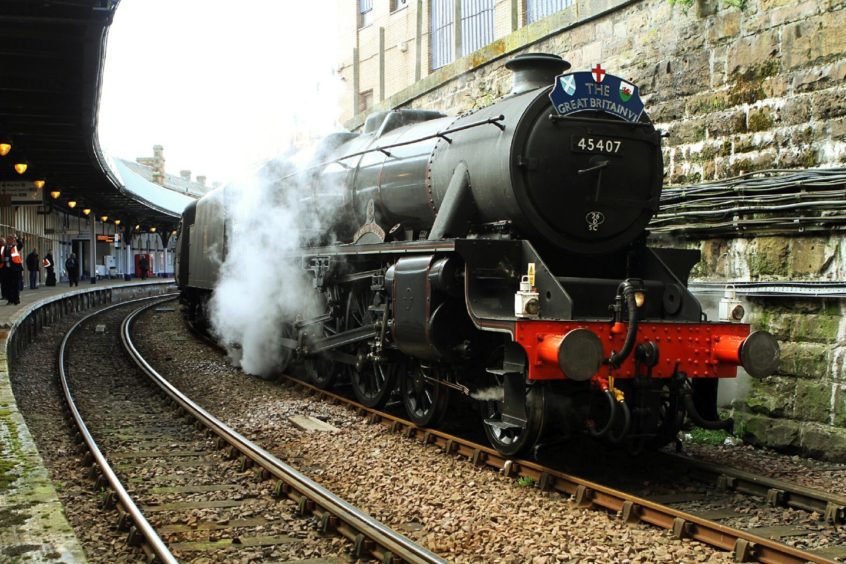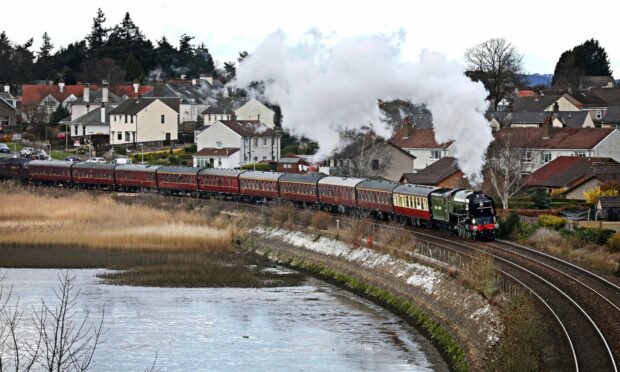The 60163 Tornado revived the glory days of steam and excited train fans in Tayside and Fife on Thursday July 22.
The steam engine, originally designed by Arthur H Peppercorn, was seen in the film Paddington 2 and raced against a car and a motorbike in Top Gear.
The locomotive left from Edinburgh Waverley station to journey along the east coast mainline and crowds clustered at stations along the route.
The trailing clouds of steam have always proved irresistible to rail enthusiasts who clamber over each other to get snaps as these locos thunder past.
We have decided to go back in time by looking at some of the classic engines from the age of steam which have visited Tayside and Fife over the years.
The Flying Scotsman
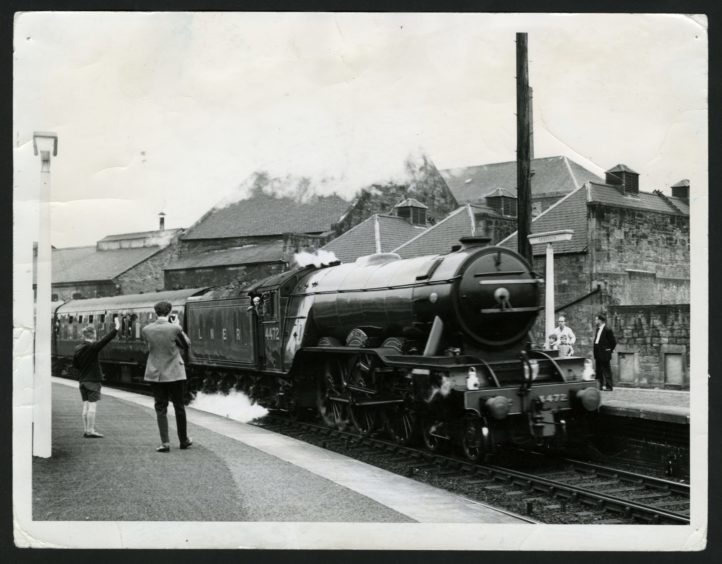
In May 1964, the Flying Scotsman went on a rail tour from Edinburgh to Aberdeen.
The train left Edinburgh Waverley and went through Fife to Stanley and the 26-mile route to Forfar and on to Bridge of Dun which were still in use.
The journey home from Aberdeen went back down the east coast line where our first picture shows the locomotive going past Arbroath Railway Station.
People turned out in droves when the engine arrived in Dundee.
A large crowd brought traffic to a standstill and invaded the tracks at Tay Bridge Station to witness the most famous locomotive in the world.
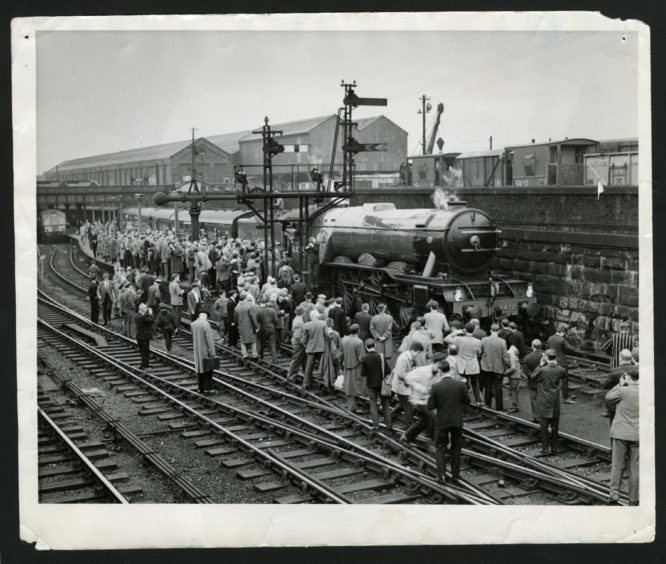
Sayajirao
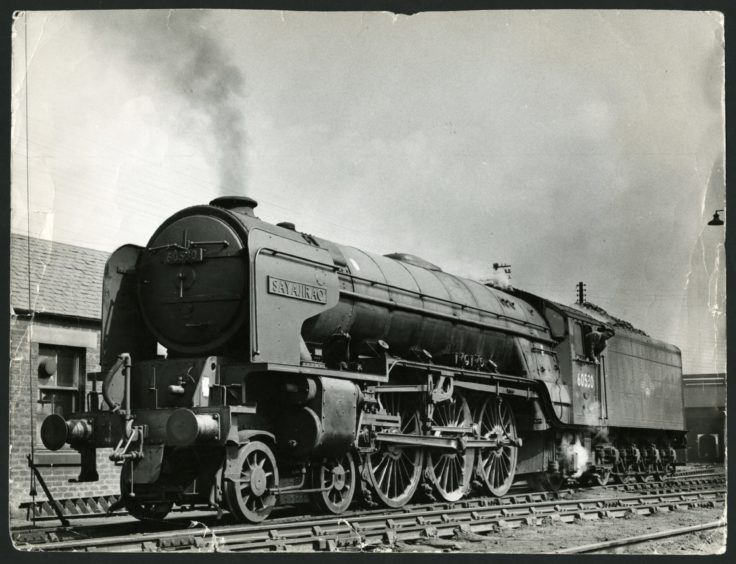
The Peppercorn Class A2 steam locomotive 60530 Sayajirao is pictured at Dundee West Station yard in May 1965.
Peppercorn A2s were named after the designer of the class, Arthur Peppercorn.
All but the first of the class were named after racehorses and Sayajirao entered service in 1948 after being built in Doncaster.
She went on to pull trains in Dundee in the 1960s.
She was eventually withdrawn in November 1966.
Carmyllie Pilot

Our picture from March 1975 shows the Carmyllie Pilot back on the rails in Dundee before being taken to the Strathspey Railway.
Carmyllie Pilot, loco number 46464, started life in Crewe back in 1950 and was the last of a batch of five to be built before production moved to Darlington.
She was finally withdrawn in August 1966 after only 16 years in service following British Rail’s decision to replace steam with diesel.
The steam locomotive had been sitting in a shed opposite Briggs’ refinery in East Dock Street since March 1967 before being loaned to the Strathspey Railway where she hauled the first scheduled passenger train on July 22 1978.
Green Arrow
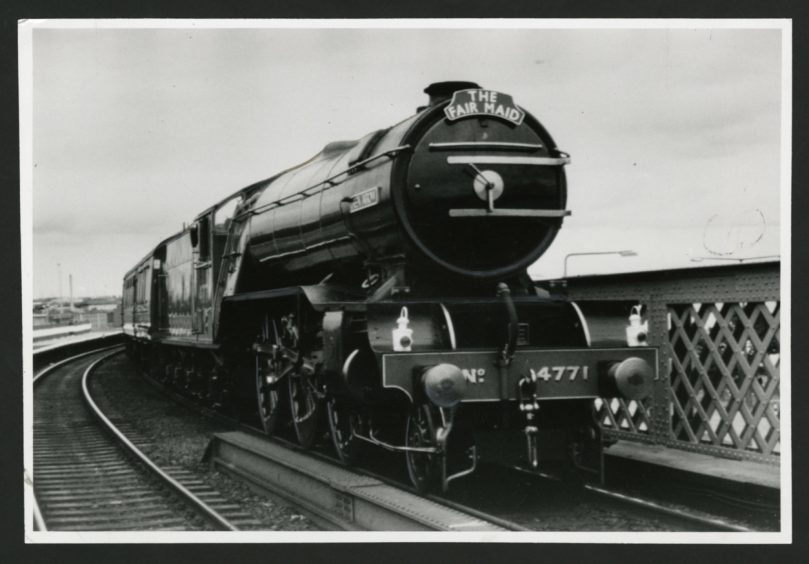
Green Arrow was built in June 1936 for the London and North Eastern Railway (LNER) at Doncaster Works to a design of Nigel Gresley.
The first-built and sole surviving member of its class, it was designed for hauling express freight and passenger trains.
She was withdrawn from service in 1962 and selected for preservation.
Our picture shows the Green Arrow when she visited Dundee as part of the centenary celebrations of the Tay Bridge in June 1987.
She was pulling the Fair Maid train.
Union of South Africa
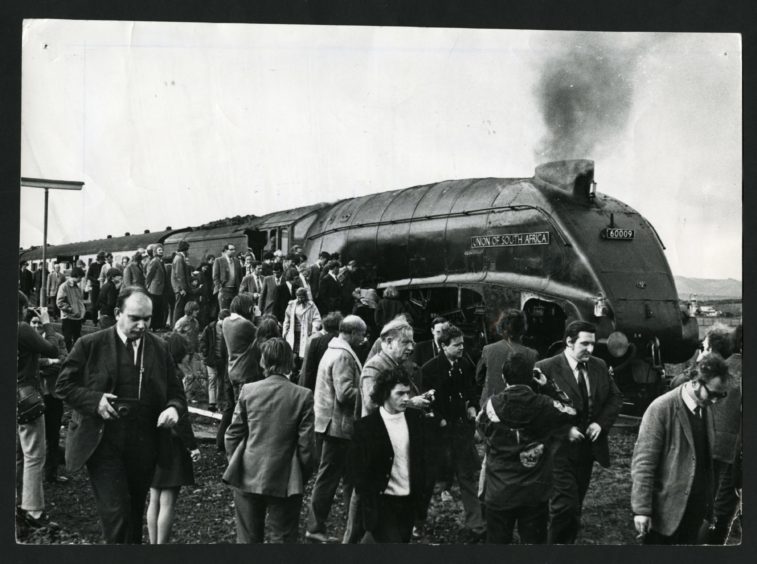
The Union of South Africa was built at Doncaster Works in 1937.
The ‘A4’ was a common sight on the east coast mainline between London and Scotland.
60009 is one of six surviving A4s and our first picture shows 50 rail enthusiasts on the platform at Tay Bridge Station when the locomotive arrived in May 1973.
Our second picture shows how popular the old girl was when she returned to Dundee in 1975 with enthusiasts out in force on the platform.
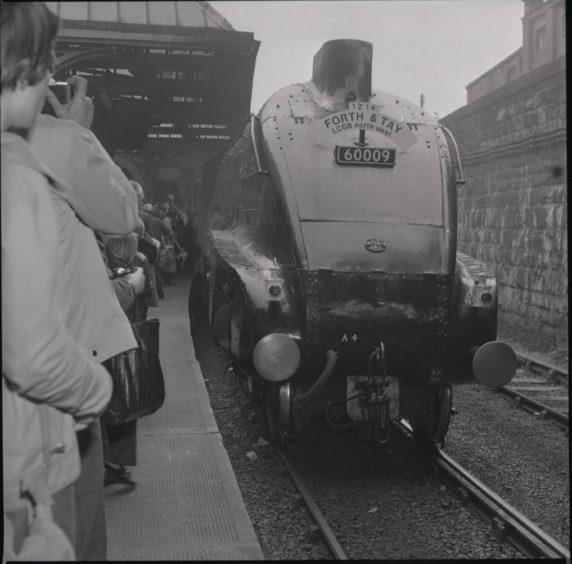
Our third picture shows John Cameron of Balluthie Farm, Fife, who was the driver of the steam engine and Tommy Farrell of Broxburn who was the fireman.
Her distinguishing features include deep green livery and a Springbok Plaque, which was gifted to the engine by a South African newspaper proprietor in 1954.
She was finally retired from service in 2000.
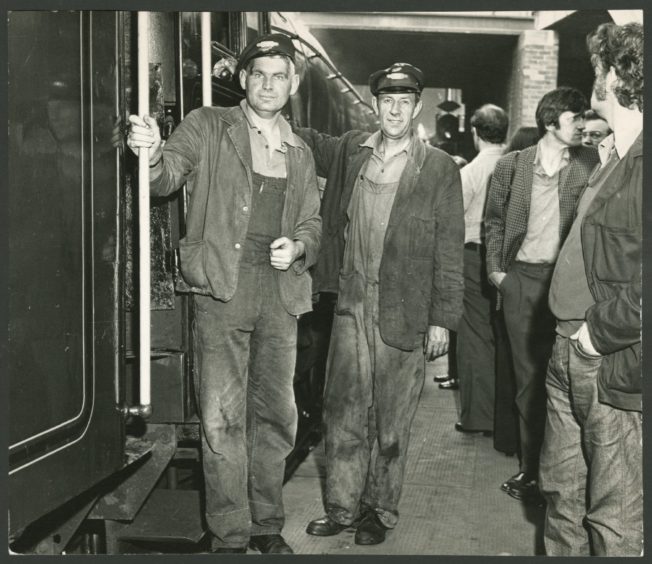
Blue Peter
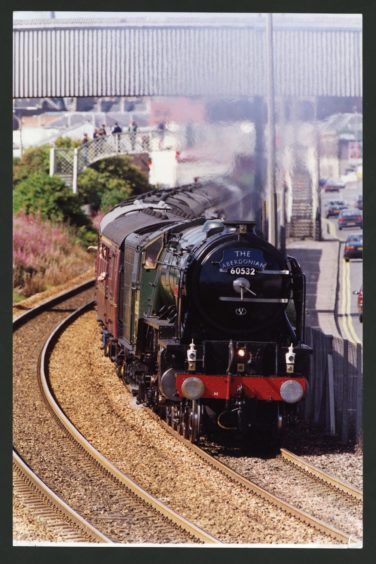
The Blue Peter steam locomotive is pictured leaving Dundee in August 1994 where she was pulling the Aberdonian train.
She was one of 14 of the class designed by Arthur Peppercorn and entered service in 1948 just weeks after the newly nationalised British Railways began life.
During steaming trials in 1951 between the single and double chimney A2s, 60532 achieved 100mph between Stonehaven and Montrose.
Towards the end of its career the locomotive was allocated to Dundee and became the last Peppercorn Pacific to be overhauled at Darlington Works.
She was saved from scrap in the late 1960s and renamed Blue Peter by the BBC show’s presenters in 1970 following her preservation.
Lancashire Fusilier
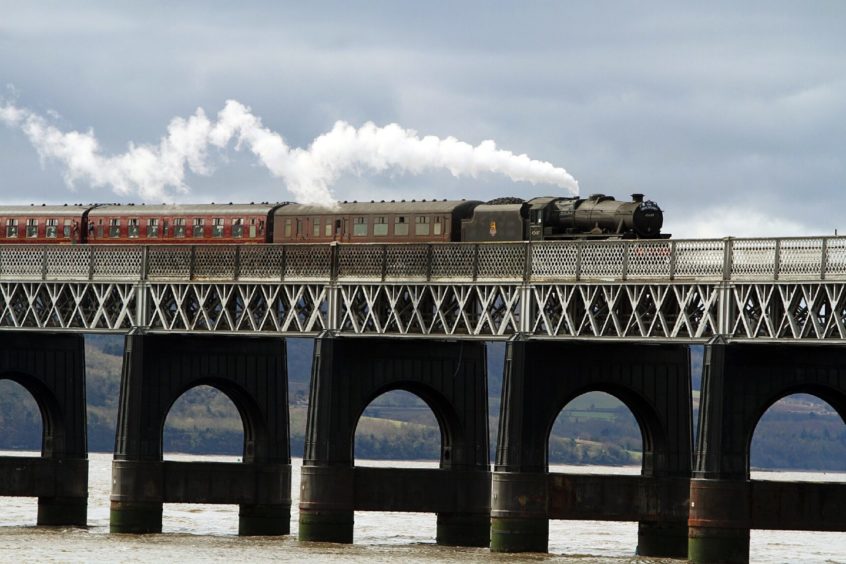
The Lancashire Fusilier is pictured pulling the Great Britain VI train across the Tay Rail Bridge in April 2013 before pulling into Dundee Station.
Built in 1937, the locomotive is one of just a handful of its type left after being withdrawn in 1968.
The loco was travelling north on a tour.
She has returned to Tayside and Fife many times over the years.
